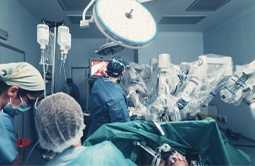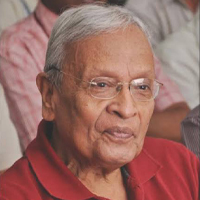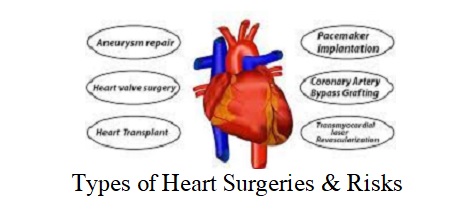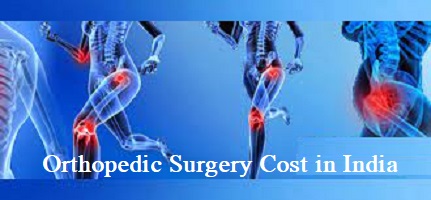
Get Free Treatment Plan From Top Hospital
Attach Medical Report
Robotic Minimally Invasive Surgery in India
In recent years, the field of surgery has witnessed a remarkable transformation with the advent of Robotic Minimally Invasive Surgery (Robotic Minimally Invasive Surgery). Cutting-edge technology has transformed surgical procedures, providing patients and surgeons with numerous benefits. Robotic Minimally Invasive Surgery has become a game-changer in healthcare by offering reduced pain and faster recovery times to enhanced precision and improved outcome.
This article delves into everything you need to know about Robotic Minimally Invasive Surgery. We shall explore how this advanced approach works, its advantages over traditional open surgery, and an array of medical specialities benefiting from its integration. By the end, you’ll gain a comprehensive understanding of how Robotic Minimally Invasive Surgery is shaping the future of surgical interventions and impacting patient care.
Join us as we journey into robotic technology, where innovation meets healthcare, and human hands collaborate seamlessly with mechanical precision to achieve medical wonders.
Robotic Minimally Invasive Surgery: Overview
Robotic Minimally Invasive Surgery (Robotic Minimally Invasive Surgery) is a state-of-the-art surgical approach that combines the precision and skill of robotic technology with the benefits of minimally invasive surgery. Unlike traditional open surgery, which requires large incisions, Robotic Minimally Invasive Surgery requires smaller incisions, reducing pain, less scarring, and faster patient recovery.
The surgical robot is the heart of Robotic Minimally Invasive Surgery, a sophisticated machine controlled by a surgeon from a console in the operating room. The robot consists of robotic arms equipped with surgical instruments and a high-definition camera, which provides the surgeon with a magnified, 3D view of the surgical site. The surgeon can perform complex surgical procedures with enhanced precision and control by manipulating the robotic arms through the console.
One of the features of Robotic Minimally Invasive Surgery is its ability to filter out hand tremors, allowing for more precise movements during surgery. The robotic arms can also rotate 360 degrees, providing the surgeon with a wide range of motion than the human hand alone. The robotic instruments used in Robotic Minimally Invasive Surgery are specially designed to mimic the movements of the human wrist, enabling the surgeon to easily perform intricate tasks.
Robotic Minimally Invasive Surgery has been successfully employed in various medical specialities, including urology, gynaecology, cardiothoracic, and general surgery. Robotic technology allows surgeons to perform complex procedures with specific accuracy, improving patient outcomes and reducing risks.
Robotic-assisted minimally invasive cardiac surgery Symptoms:
Robotic-assisted minimally invasive cardiac surgery is indicated in
Repair of mitral valve in cases of mitral stenosis or prolapse
Correction of Atrial fibrillation
Replacement of mitral valve in cases of mitral stenosis or prolapse
Repair of tricuspid valve in cases of tricuspid stenosis or prolapse
Replacement of tricuspid valve in cases of tricuspid stenosis or prolapse
Closure of holes in the heart in cases of :
Atrial septal defect (ASD)
Ventricular septal defect (VSD)
Patent foramen ovale (PFO)
Cardiac tumours removal in cases of myxoma, fibroelastoma of the mitral and tricuspid valve
Septal myectomy
Coronary artery bypass graft (CABG)
Robotic Minimally Invasive Surgery: Advantages
The advantages of Minimally Invasive and Robotic Surgery are numerous and significant, making it a preferred choice for patients and surgeons. Let’s explore some of the key benefits that this innovative approach offers.
Reduced Pain and Scarring:
One of the primary advantages of Robotic Minimally Invasive Surgery is the minimal trauma it inflicts on the patient’s body. The small incisions used in this technique result in less pain and discomfort than traditional open surgery. Additionally, the smaller incisions lead to minor scars, which are cosmetically preferable and heal faster.
Faster Recovery Times:
Because Robotic Minimally Invasive Surgery is less invasive, it often results in shorter hospital stays and quicker recovery times. The reduced trauma to the body allows patients to regain their normal daily activities more rapidly, improving their overall quality of life.
Enhanced Precision:
The robotic arms used in Robotic Minimally Invasive Surgery offer unparalleled precision and control. The robotic instruments can make precise movements with a wide range of motion than human hands, allowing surgeons to perform intricate procedures with enhanced accuracy. This precision translates into better surgical outcomes and reduced risks for patients.
Improved Visualisation:
The high-definition, 3D visualisation provided by the robotic vision system is a game-changer in the operating room. Surgeons can see the surgical site in greater detail and with enhanced depth perception. It enables them to navigate through complex anatomical structures easily. This improved visualisation leads to safer and more effective surgeries.
Reduced Blood Loss and Complications:
Robotic Minimally Invasive Surgery techniques often reduce blood loss during surgery. The precise movements of the robotic instruments minimise the risk of accidental injury to blood vessels, reducing the need for transfusions and decreasing the likelihood of complications.
Expanded Surgical Capabilities:
Robotic Minimally Invasive Surgery has expanded the range of surgical procedures that can be performed safely and effectively. Complex surgeries that were once considered high-risk or technically challenging can now be accomplished with greater ease and precision. It includes procedures in various medical specialities such as urology, gynaecology, cardiac surgery, and more.
Surgeon Ergonomics:
The console used by the surgeon in Robotic Minimally Invasive Surgery is designed with ergonomics in mind. The surgeon can sit comfortably, with a natural posture, while operating the robotic arms. It reduces the physical strain on the surgeon, allowing them to perform prolonged and more complex procedures with less fatigue.
The advantages of Robotic Minimally Invasive Surgery make it an attractive option for patients and surgeons alike. The combination of reduced pain, faster recovery times, enhanced precision, and expanded surgical capabilities has significantly transformed the field of surgery and improved patient outcomes.
Robotic Minimally Invasive Surgery: Pre Procedure
We will delve into the pre-procedure phase of Robot-Assisted Minimally Invasive Surgery, exploring the crucial steps to ensure patient safety and maximise surgical success.
Patient Evaluation and Selection
In the pre-procedure phase of robotic minimally invasive surgery, patient evaluation and selection play a vital role in ensuring the success of the surgical procedure. Before a patient can undergo robotic surgery, they must undergo a comprehensive analysis to determine their suitability.
The evaluation process involves thoroughly assessing the patient’s medical history, including any previous surgeries, medical conditions, and medications they may be taking. This information is crucial in determining whether the patient is a suitable candidate for robotic surgery and if any potential risks or complications need to be considered.
In addition to the medical evaluation, patient selection is also important in determining the success of robotic surgery. Not every patient is a good candidate for this type of procedure, and factors such as body mass index, anatomy, and overall health play a significant role in determining suitability. A multidisciplinary team, including surgeons, anesthesiologists, and nurses, collaborates to carefully review each patient’s case and make an informed decision regarding their eligibility for robotic surgery.
Once a patient has been evaluated and selected as a suitable candidate for robotic surgery, obtaining informed consent is the next step in the pre-procedure phase.
Informed Consent
Obtaining informed consent is essential to the pre-procedure process in robotic minimally invasive surgery. It involves providing the patient with detailed information about the procedure, potential risks and benefits, and alternative treatment options. It allows the patient to make an informed decision about whether or not to proceed with the surgery.
During the informed consent process, the surgeon explains the details of the robotic surgery, including how the robot will be used, the expected outcomes, and the potential risks, such as bleeding, infection, and damage to surrounding organs or tissues. The surgeon also discusses alternative treatment options, if applicable, and addresses any questions or concerns the patient may have.
In addition to the surgeon, other surgical team members, such as the anesthesiologist and nurses, may also be involved in the informed consent process to provide additional information and answer any patient’s questions.
Once the patient has informed consent and is ready to proceed with the surgery, imaging and preoperative planning are the next step in the pre-procedure phase.
Imaging and Preoperative Planning
Imaging and preoperative planning are vital steps in the pre-procedure phase of robotic minimally invasive surgery. These steps allow the surgical team to gather detailed information about the patient’s anatomy, plan the surgical approach, and ensure the accuracy and precision of the procedure.
Investigations such as echocardiogram, chest X-ray, and cardiac catheterization may be required. Apart from these imaging techniques such as computed tomography (CT) scans, magnetic resonance imaging (MRI), and ultrasound are also commonly used to obtain high-resolution patient anatomy images. These images create a three-dimensional model of the patient’s body for preoperative planning.
During the preoperative planning phase, the surgical team uses the three-dimensional model to simulate the surgical procedure, identify potential challenges or complications, and determine the optimal robotic instrument placement. It allows the team to create a detailed surgical plan, including the specific steps and movements performed.
In addition to imaging and preoperative planning, medication and preparation are essential components of the pre-procedure phase of robotic minimally invasive surgery.
Medication and Preparation
Medication and preparation are crucial steps in ensuring the safety and success of robotic minimally invasive surgery. Before the procedure, the patient may be required to stop taking certain medications, such as blood thinners, to reduce the risk of excessive bleeding during the surgery.
Additionally, the patient may be given medication to help relax or sedate them before the procedure. It can help alleviate anxiety and ensure the patient is comfortable during the surgery. The specific medicines used will depend on the patient’s individual needs and preferences, as well as the recommendations of the surgical team.
In addition to medication, the patient must typically follow specific preparation instructions before the surgery. It may include fasting for a certain period, taking a shower with a special antibacterial soap, and removing any jewellery or accessories that could interfere with the surgical procedure.
Once the patient has been medicated and prepared, the anaesthesia consultation is the next step in the pre-procedure phase.
Anesthesia Consultation
Anaesthesia is critical in robotic minimally invasive surgery, as it ensures the patient’s comfort and safety during the procedure. Before the surgery, the patient meets with an anesthesiologist for a thorough consultation to discuss their medical history, allergies or previous reactions to anaesthesia, and concerns or questions.
During the anaesthesia consultation, the anesthesiologist will evaluate the patient’s overall health and determine the most appropriate type of anaesthesia for the surgical procedure. In robotic surgery, anaesthesia options can range from general anaesthesia, where the patient is completely unconscious, to regional or local anaesthesia, where only a specific body area is numb.
The anesthesiologist will also explain anaesthesia’s potential risks and side effects, such as nausea, dizziness, or allergic reactions, and discuss any additional monitoring or precautions necessary during the surgery. This consultation ensures the patient is well-informed and prepared for anaesthesia.
Once the anaesthesia consultation is complete, the next step in the pre-procedure phase is the surgical team briefing.
Surgical Team Briefing
A surgical team briefing is crucial in the pre-procedure phase of robotic minimally invasive surgery. It involves the entire surgical team, including the surgeon, anesthesiologist, nurses, and any other healthcare professionals interested in the procedure, coming together to review the surgical plan, discuss potential challenges or complications, and ensure everyone is on the same page.
During the team briefing, the surgeon outlines the specific steps of the surgical procedure, including the robotic instrument placement, and addresses any concerns or questions from the team members. The anesthesiologist discusses the anaesthesia plan, including any specific considerations or precautions that may be necessary.
Nurses and other healthcare professionals may also provide essential input and information during the briefing, such as patient-specific considerations, equipment needs, and any additional support or assistance that may be required during the procedure.
The surgical team briefing allows for effective communication and collaboration among the entire team, ensuring that everyone is well-prepared and focused on the successful execution of the robotic surgery.
Robotic Minimally Invasive Surgery: During Procedure
The procedure requires the patient on sedation. The patient may be placed on a heart-lung machine for assistance. Once the patient is ready, the surgeon proceeds with small incisions between the ribs. It is to introduce the robotic arms into the chest. The tiny robotic arms hold and manipulate several small instruments required to do the tasks on the cardiac arteries or the heart. A miniature video camera is also inserted through another incision to provide three-dimensional visuals of the operating area.
From here surgeon controls the robotic arms and surgical instruments from the console.
Now, we will take you behind the scenes of a robotic minimally invasive surgery and explore the incredible capabilities of these cutting-edge technologies experienced during the procedure:
Robotic Arm Precision and Control
One of the key advantages of robotic surgery is the unparalleled precision and control offered by robotic arms. These robotic arms have multiple robotic instruments that can be manoeuvred accurately. Unlike traditional surgery, where the human anatomy can limit the surgeon’s hand movements, robotic arms can rotate in any direction and reach areas that would otherwise be difficult to access.
The surgeon controls the robotic arms through a console, where they can operate with fine-tuned movements using hand and foot controls. This allows for delicate and intricate procedures to be performed with minimal invasiveness. The robotic arms also can mimic the movement of the surgeon’s hand, providing a seamless extension of their skills.
The precision and control offered by robotic arms have significantly improved surgical outcomes. With the ability to perform complex procedures with greater accuracy, surgeons can achieve better results and minimise the risk of complications.
High-Definition Visualisation and Imaging
Another crucial aspect of robotic surgery is the high-definition visualisation and imaging technology accompanying these procedures. Robotic systems have advanced cameras that give surgeons a clear and magnified view of the surgical site. This enhanced visualisation allows for the precise identification of structures and better decision-making during the procedure.
The high-definition cameras used in robotic surgery can capture images in 3D, providing a depth perception essential for accurate surgical manoeuvres. Surgeons can zoom in and out, rotate the view, and adjust the focus, all in real-time. This level of visualisation is unparalleled in traditional open surgery, where the human eye can limit the surgeon’s view.
Robotic minimally invasive surgery not only has great visuals but also advanced imaging technologies such as fluorescent and near-infrared imaging. These techniques allow surgeons to identify blood vessels, lymph nodes, and other critical structures with greater clarity, further enhancing the precision and safety of the procedure.
Stability and Elimination Of Hand Tremors
One of the challenges surgeons face during traditional surgery is hand tremors, which can affect the precision of their movements. However, robotic surgery has overcome this limitation by providing stability and eliminating hand tremors. The robotic arms filter out involuntary movements, ensuring that the surgeon’s actions are translated accurately and without tremors.
The stability offered by robotic arms is particularly beneficial in procedures that require extreme precision, such as microsurgery or nerve-sparing surgery. Surgeons can confidently perform intricate movements, knowing that the robotic system will execute their actions precisely. This stability also minimises the risk of accidental damage to surrounding tissues and structures.
Remote Patient-Side Assistance
Robotic surgery enables remote patient-side assistance, significantly impacting medical education and collaboration. Through telemedicine and remote access, experienced surgeons can provide guidance and support to less-experienced surgeons in real-time, regardless of geographical constraints. It allows for disseminating of knowledge and expertise, leading to improved surgical outcomes worldwide.
With remote patient-side assistance, surgeons can collaborate and consult with experts worldwide, bringing together a wealth of knowledge and experience. This virtual collaboration can be particularly valuable in challenging cases or for surgeons in remote areas with limited access to specialised expertise.
Real-Time Feedback and Monitoring
Robotic surgery incorporates real-time feedback and monitoring systems that provide surgeons with valuable information during the procedure. These systems continuously monitor parameters such as heart rate, blood pressure, and oxygen levels, providing instant feedback to the surgical team. It allows for early detection of abnormalities or complications, ensuring timely interventions.
The real-time feedback and monitoring systems also enhance the safety of the procedure. Surgeons can closely monitor the progress of the surgery and make necessary adjustments if required. This vigilance and responsiveness minimises the risk of complications and ensures optimal patient outcomes.
Additionally, the data collected during robotic surgery can be used for analysis and research. Researchers can gain insights into surgical techniques, patient outcomes, and potential improvements in surgical practices. It contributes to the advancement of medical knowledge and the refinement of surgical procedures.
Robotic Minimally Invasive Surgery: Post-Procedure (Post-Care)
We will explain everything you need about postoperative care after a robotic minimally invasive surgery.
Reduced Recovery Time and Hospital Stay
The process of recovery is a crucial component of any surgical procedure. Robotic minimally invasive surgery reduces recovery time compared to traditional surgery. Patients undergoing robotic-assisted surgery are discharged from the hospital in a day or two. But what happens after returning home? When you leave the hospital, it is essential to ensure that you follow your surgeon’s post-op instructions. These instructions will include specific details on postoperative activities and how much physical activity you can do after the surgery. Patients who adhere to their post-op instructions recover faster and with fewer complications.
Minimal Scarring and Aesthetically Appealing Results
One of the primary benefits of robotic minimally invasive surgery is the reduction of scarring. The small incisions made during robotic surgery are cosmetically appealing and heal quickly. However, caring for the incision sites is vital to avoid infection and promote rapid healing. Your surgeon will inform you of wound care instructions, including dressing changes, cleaning procedures, or medications to prevent infection.
Pain Management and Patient Comfort
Pain is a significant concern for patients postoperatively. Robotic surgical procedures cause less surrounding tissue trauma, reducing postoperative pain. You will receive medication to manage post-op pain through an intravenous injection, tablets, or both. Your surgeon will advise the best type of medication for you, depending on the procedure and your medical history. To ensure optimal comfort, you will closely monitor your pain levels and medication dose to avoid any potential sedative or allergic reactions.
Lower Risk of Complications and Infections
Complications are a likely outcome of any surgical procedure. However, robotic minimally invasive surgery has a lower risk of complications than traditional surgery. One of the primary reasons for this is reduced surgical site exposure to the external environment, leading to less potential infection. To minimise the risk of infection, you need to ensure optimal hygiene of your incision sites and follow instructions given to you by your doctor. In cases of fever, redness, or discharge from the incision site, immediately contact your surgeon.
Follow-up Care and Rehabilitation
After leaving the hospital, scheduling follow-up appointments with your surgeon is essential. You will discuss any issues that arise and have a physical examination to ensure that you are healing correctly. Rehabilitation is an integral part of postoperative care. You will receive instructions on postoperative exercises to help with healing and recovery. Depending on the procedure, your surgeon may recommend physiotherapy for optimal recovery.
Robotic Minimally Invasive Surgery: Risks and Complications
The development of robotic surgery has been a game-changer in the world of medicine. Robotic minimally invasive surgery, in particular, has allowed surgeons to perform complex procedures with greater precision, reduced recovery times, and less postoperative pain. However, robotic surgery carries certain risks and potential complications, like any other surgical procedure. It is time to examine the risks and complications associated with robotic minimally invasive surgery and methods to mitigate them.
Surgical Risks and Potential Complications
As with any surgical procedure, certain risks come with robotic surgery. These can include infection, bleeding, anaesthesia complications, and nerve damage. One major risk identified with robotic surgery is the potential for accidental damage to organs or structures due to the surgeon’s lack of tactile feedback. To minimise the risks of surgical complications, the surgeon must have extensive training and experience in robotic surgery. To achieve this goal, we need to find the most skilled surgeon available.
Technical Failures and Malfunctions
Robotic surgical systems rely heavily on technology, which means there is the possibility of technical failures or malfunctions during the procedure. These can include issues with the robotic arms, camera, or software. Patients should contact the top hospitals offering the facility that has their system regularly maintained and updated. Al Afiya Medi Tour is one of the most interconnected tourism companies and will help you in finding the best hospitals in India for robotic minimally invasive surgery.
Surgeon Learning Curve
Robotic surgery requires a different set of skills than traditional surgery, and as a result, there is a learning curve for surgeons who are new to the technology. This can result in a higher risk of complications during the surgeon’s initial cases. To minimise the risks associated with the learning curve, the surgeon must receive extensive training and mentoring from experienced robotic surgeons.
Patient-Specific Risks and Pre-Existing Conditions
Some patients may have pre-existing conditions that increase their risk of complications during robotic surgery. These can include obesity, lung disease, and heart disease. Certain patient-specific factors, such as age and medical history, may also increase the risk of complications. The surgical team must take into account these factors when determining if a patient is a good candidate for robotic surgery.
Long-Term Effects and Follow-Up Complications
While robotic minimally invasive surgery has been shown to reduce recovery times and postoperative pain, long-term effects and follow-up complications can still occur. These can include issues such as infection, bleeding, and nerve damage.
Robotic Minimally Invasive Surgery Cost in India
Robotic Minimally Invasive Surgery is a complex and sophisticated procedure. The cost varies depending on the type of surgery required, the hospital, and the surgeon. In India, the cost of robotic surgery is generally lower compared to other countries like the US and UK. The average cost of robotic surgery in India starts from Rs 5 Lakh may extend up to Rs. 20 Lakh ($27 084) for advanced procedures
One of the reasons why robotic surgery is more affordable in India compared to other countries is due to the lower operating costs. Most of the hospitals in India have the best technology, but low cost of treatments as the salaries of healthcare professionals are lower than that in Western countries. Also, the cost of living in India is generally lower, contributing to lower overhead costs.
Another factor that makes robotic surgery more affordable in India is medical tourism. Due to the lower costs, many people from other countries come to India to undergo treatments. Some hospitals in India even offer healthcare packages that include travel, lodging, and treatment costs for international patients. These packages are designed to make the entire process of medical tourism more accessible and affordable.
However, the cost of robotic surgery can still be a significant expense for families with limited financial resources. The good news is that some hospitals offer patients the option to pay for their treatments in instalments. It allows them to manage costs more effectively and ensures that the required treatment is not delayed due to financial limitations.
Conclusion
Robotic Minimally Invasive Surgery (Robotic Minimally Invasive Surgery) has emerged as a groundbreaking advancement in the field of surgery, revolutionising medical procedures. With its numerous advantages over traditional open surgery, Robotic Minimally Invasive Surgery has become a preferred choice for patients and surgeons. The precision and control offered by robotic arms, along with enhanced visualisation and stability, have improved surgical outcomes and reduced patient risks.
Robotic Minimally Invasive Surgery represents a remarkable fusion of technology and medicine, ushering in a new era of precise, less invasive, and patient-centred surgical interventions. As this innovative approach continues to transform the field of surgery, it brings hope for a future where medical wonders are achieved through the seamless collaboration of human expertise and robotic precision.
Robotic minimally invasive surgery - Risk & Complications

The development of robotic surgery has been a game-changer in the world of medicine. Robotic minimally invasive surgery, in particular, has allowed surgeons to perform complex procedures with greater precision, reduced recovery times, and less postoperative pain. However, robotic surgery carries certain risks and potential complications, like any other surgical procedure. It is time to examine the risks and complications associated with robotic minimally invasive surgery and methods to mitigate them.
Surgical Risks and Potential Complications
As with any surgical procedure, certain risks come with robotic surgery. These can include infection, bleeding, anaesthesia complications, and nerve damage. One major risk identified with robotic surgery is the potential for accidental damage to organs or structures due to the surgeon’s lack of tactile feedback. To minimise the risks of surgical complications, the surgeon must have extensive training and experience in robotic surgery. To achieve this goal, we need to find the most skilled surgeon available.
Technical Failures and Malfunctions
Robotic surgical systems rely heavily on technology, which means there is the possibility of technical failures or malfunctions during the procedure. These can include issues with the robotic arms, camera, or software. Patients should contact the top hospitals offering the facility that has their system regularly maintained and updated. Al Afiya Medi Tour is one of the most interconnected tourism companies and will help you in finding the best hospitals in India for robotic minimally invasive surgery.
Surgeon Learning Curve
Robotic surgery requires a different set of skills than traditional surgery, and as a result, there is a learning curve for surgeons who are new to the technology. This can result in a higher risk of complications during the surgeon’s initial cases. To minimise the risks associated with the learning curve, the surgeon must receive extensive training and mentoring from experienced robotic surgeons.
Patient-Specific Risks and Pre-Existing Conditions
Some patients may have pre-existing conditions that increase their risk of complications during robotic surgery. These can include obesity, lung disease, and heart disease. Certain patient-specific factors, such as age and medical history, may also increase the risk of complications. The surgical team must take into account these factors when determining if a patient is a good candidate for robotic surgery.
Long-Term Effects and Follow-Up Complications
While robotic minimally invasive surgery has been shown to reduce recovery times and postoperative pain, long-term effects and follow-up complications can still occur. These can include issues such as infection, bleeding, and nerve damage.

Best robotic cardiac surgeons in India
Robotic minimally invasive cardiac surgery requires top surgeons in India who are specific in handling robotic arms to perform the surgery. In India, the leading hospitals boast a proficient and accomplished faculty of doctors, surgeons and radiology teams who conduct essential tests and procedures for patients. Al-Afiya Medi Tour has established relationships with hospitals and doctors that benefit both international and domestic patients. With the assistance of their team, you can consult with your preferred doctor for medical guidance and treatment. Below is the list of a few robotic cardiac surgeons in India
Dr. Ganesh Kumar Mani
Dr. Yugal K Mishra
Dr. Naresh Trehan
Dr. Sanjay Gogoi
Dr. Smita Mishra
Dr. Bipin Dubey
Dr. Samanjoy Mukherjee
Dr. Sajal Gupta
Dr. Pradeep Nayak
Dr. Sandeep Singh
Dr. Rachit Saxena
Dr. Hemant Madan

Robotic minimally invasive cardiac surgery is a robot-assisted minimally invasive surgery and its high precision and incredible outcomes in performing complex surgeries are an introduction to cutting-edge technology.
India boasts top-notch hospitals that offer exceptional facilities for minimally invasive robotic cardiac surgery and other medical services all in one place. Al-Afiya Medi Tour connects patients with leading hospitals in India, providing excellent guidance and assistance to national and international patients. Patients are free to choose from specific areas throughout the country where robotic cardiac centres are located, ensuring they have the freedom to select the hospital and location of their choice. These hospitals in India provide state-of-the-art architecture and top-notch facilities for the ultimate convenience and comfort of patients and their visitors. Below are a few of the Hospitals which provide robotic minimally invasive surgery
Fortis hospital, Gurguram, Delhi, India
Artemis Hospital, Gurguram, Delhi, India
Medanta hospital, Gurguram, Delhi, India
Max Hospital, Delhi, India
Sanar International hospital, Gurguram, Delhi, India
BLK Max super-speciality Hospital, Delhi, India
Manipal Hospital, Dwarka, Delhi
Metro Hospital, Faridabad, India
Morengo hospital, Gurguram, Delhi, India
Apollo Hospitals, Delhi, India
Fortis Hospital, Mumbai, India
Kims Hospital, Hyderabad, India
Apollo Hospitals, Hyderabad, India
Book An Appointment for Robotic minimally invasive surgery

Get Free Treatment Plan From Top Hospital
Attach Medical Report

Robotic Minimally Invasive Surgery is a complex and sophisticated procedure. The cost varies depending on the type of surgery required, the hospital, and the surgeon. In India, the cost of robotic surgery is generally lower compared to other countries like the US and UK. The robotic surgery cost in India comes in the range of $2000 to $6000.

Robotic minimally invasive surgery success rate in India is very excellent. Although success rate depends on various factors such as hospital, doctor, patient, and many more. You can consult online with our healthcare professionals to know the success rate of Robotic minimally invasive surgery in India.
Contact Form
Attach Medical Report
FAQs (FAQs (Frequently Asked Questions))

What is Robotic minimally invasive Surgery?
Robotic minimally invasive surgery in India is used for the operation betterment to use the medical instrument with the help of the mechanized arm. In this process, the surgeon does not need to put tireless effort into making the operation successful.
What are the types of Robotic minimally invasive Surgery?
Robotic minimally invasive Surgery has become the number one choice of customers as it does not lead to excessive post-operative pain and short stay in hospital. Broadly, robotic minimally invasive surgery in India under five categories. Glance on those categories as follows.
- Robotic Gynecologic Surgery
- Robotic Prostate Surgery
- Robotic Kidney Surgery
- Robotic Colorectal Surgery
- Single-Site Robotic Gallbladder Surgery
How much time it will take for Robotic minimally invasive Surgery in India?
The standard time for robotic minimally invasive surgery in India varies in the range of 1-4 hours. As per severity and complexity time, robotic invasive surgery can occupy more surgery operative time.
Who can get Robotic minimally invasive Surgery in India?
Robotic minimally invasive Surgery requires the abnormal person to perform their biological actions. However, robotic minimally invasive surgery in India lets us relax to the below-mentioned complexities.
- Heart issue
- Digestive problem
- Bladder abnormality
- Prostate issues
No matter what issue your body experiences, you can get a quick recovery from your associated issues. Once you come in normal condition, your body can perform well.
What are the precautions after Robotic minimally invasive Surgery in India?
As per the adoption of the particular robotic surgery, the precautions for the robotic minimally invasive surgery in India. For instance, robotic minimally invasive Surgery used for digestive and heart issues does not need the same precaution. In this condition, you can find the assistance of the relative surgeon.
What is the Robotic minimally invasive Surgery success rate in India?
The normal robotic minimally invasive surgery success rate in India measures around 93 percent. On the other hand, the advanced robotic minimally invasive surgery success rate in India is around 93 to 97 percent.
What is the Robotic minimally invasive Surgery cost in India?
The Robotic minimally invasive Surgery cost in India is determined according to the operative organ. However, Robotic minimally invasive Surgery price in India can make a slight surge as operation time increases to do surgery with absolute precision.
What is robotic surgery cost in India?
The robotic surgery cost in India comes in the range of $2000 to $6000. However, it is not a definite cost, and one should ask robotic surgery price in India to the referred hospital team.
What are the top 10 best Robotic minimally invasive Surgery hospitals in India?
The best Robotic minimally invasive Surgery hospitals in India are good for recovering your health. While normal treatment does not offer you the real benefits, your doctor refers you to the best Robotic minimally invasive Surgery hospital in India. Ensure the name of the top Robotic minimally invasive Surgery hospitals in India and check your budget compatibility.
Once you confirm this, you can move ahead with the top Robotic minimally invasive Surgery hospital in India. Let us dive into the best hospital for Robotic minimally invasive Surgery in India and glance over these lists.
- Apollo Hospitals, Delhi
- Hinduja Hospital, Mumbai
- Global Hospitals Group India
- Fortis Hospital, Delhi
- Max Hospital, New Delhi
- Medanta Hospital, Gurgaon
- Lilavati Hospital, Mumbai
- Asia Columbia Group of Hospitals, Bangalore
- Hiranandani Hospital, Mumbai
- Rajiv Gandhi Cancer Hospital, New Delhi
Do not worry about your health recovery, and the collaboration with the best hospitals for Robotic minimally invasive Surgery in India to sustain longevity. Stay tuned with the 10 best Robotic minimally invasive Surgery hospitals for better mechanisms.
What are the top 10 best Robotic minimally invasive Surgery surgeons in India?
Never too late to connect with the best Robotic minimally invasive Surgery surgeons in India. By the way, the top Robotic minimally invasive Surgery surgeons in India claims to have recovered from worse condition. Be positive and book your appointment with the best Robotic minimally invasive Surgery surgeon in India as quickly as possible. Let us insight on the below-mentioned surgeons.
- Dr. Aritra Ghosh
- Dr Satish N
- Dr. Prajesh Bhuta
- Dr. Madva Jayashankar
- Dr. Ramen Goel
- Dr. Manmohan Kamat
- Dr. Saket Goel
- Dr. Ajay Kumar Kriplani
- Dr. Nitish Jhawar
- Dr. G Ramesh Babu
Once you contact with top Robotic minimally invasive Surgery surgeon in India, you are quite close to taking your surgery on the supposed date.
How can I apply or get or book an appointment for Robotic minimally invasive Surgery in India?
If you are indeed in the requirement to apply for Robotic minimally invasive Surgery in India, then you can open the website https://www.alafiyameditour.com/. After opening this link, you can find the online forms for making appointments with experienced medical professionals. Select the surgeon name to book an appointment for Robotic minimally invasive Surgery in India for wellness perspective.
Top Doctors & Surgeons in India
Why Choose Us

Personalized Care
24x7 Supports
Top NABH and JCI accredited Hospitals
Free Cost Estimation & Medical Opinion from Specialist
Get Free Tele/Video Consultation
Visa and Traveling Assistance
Post-surgery with Assistance in Follow-ups














